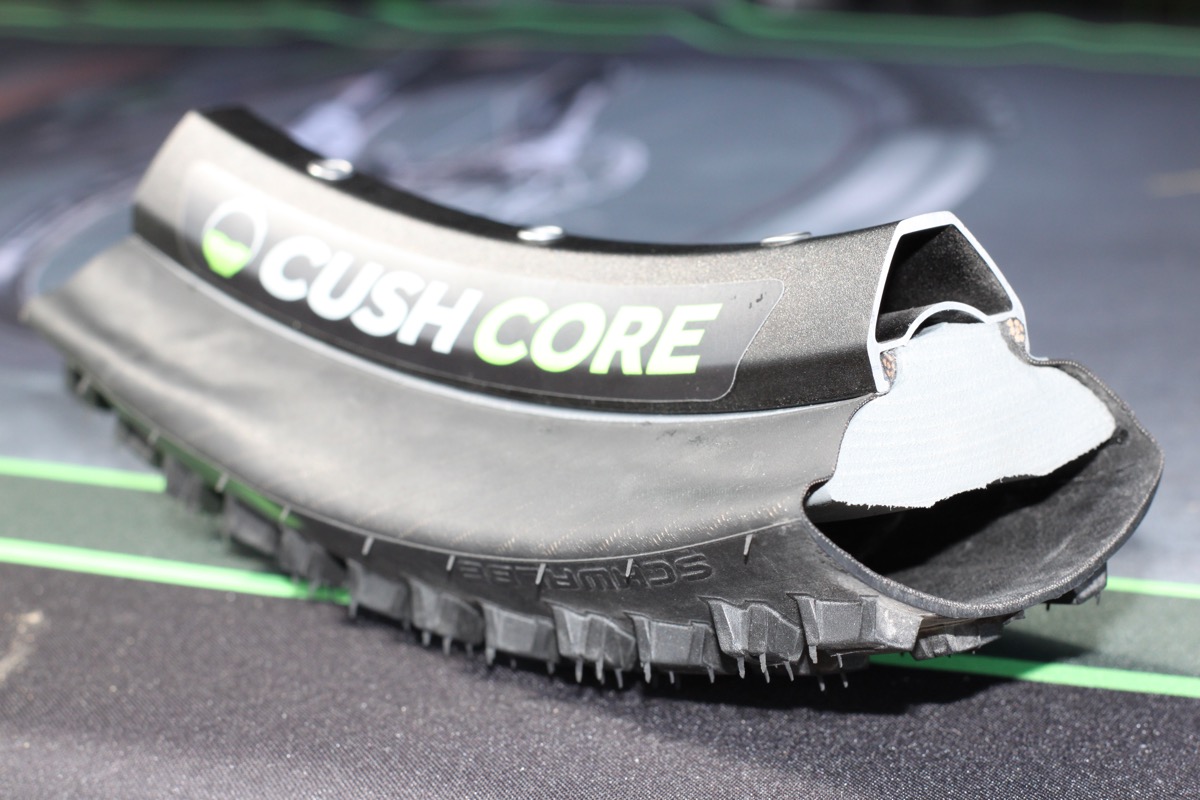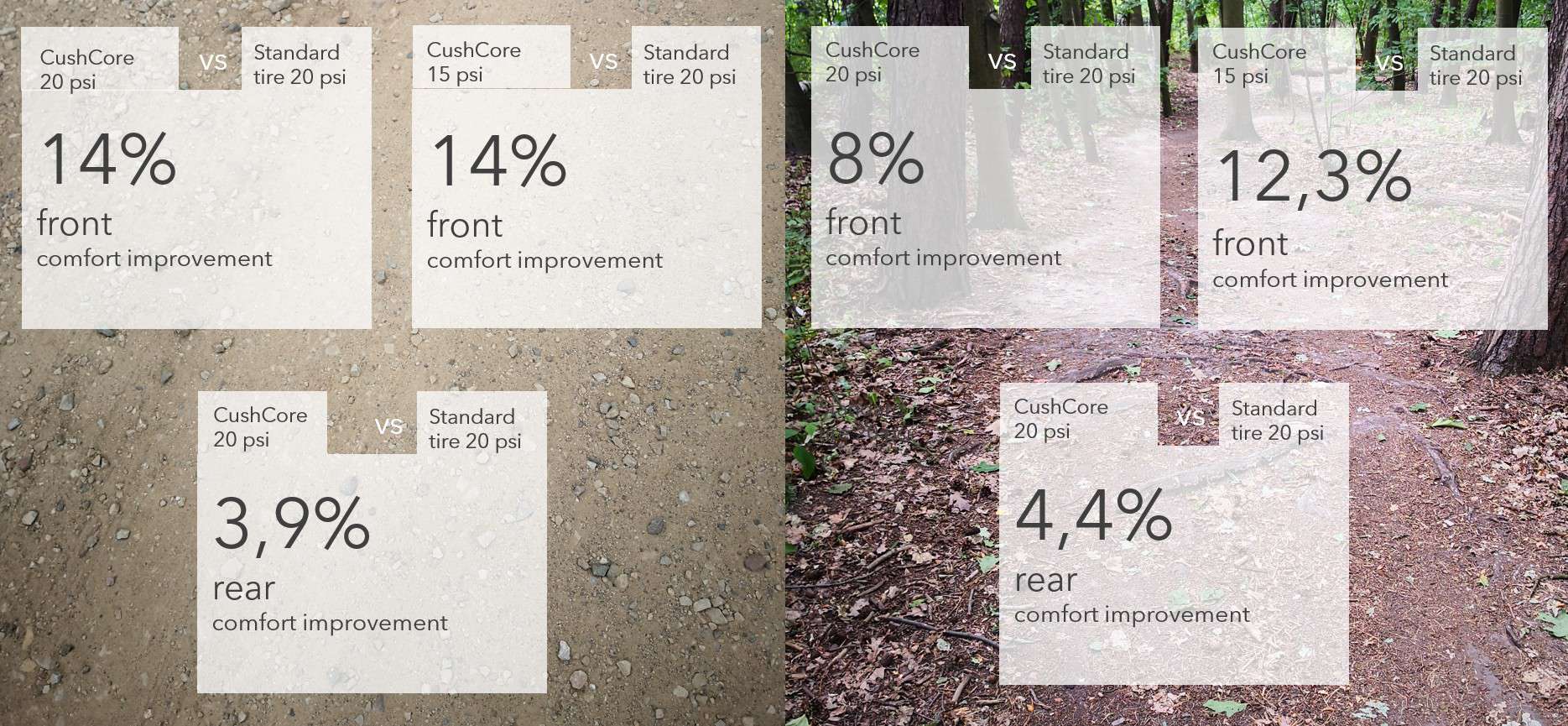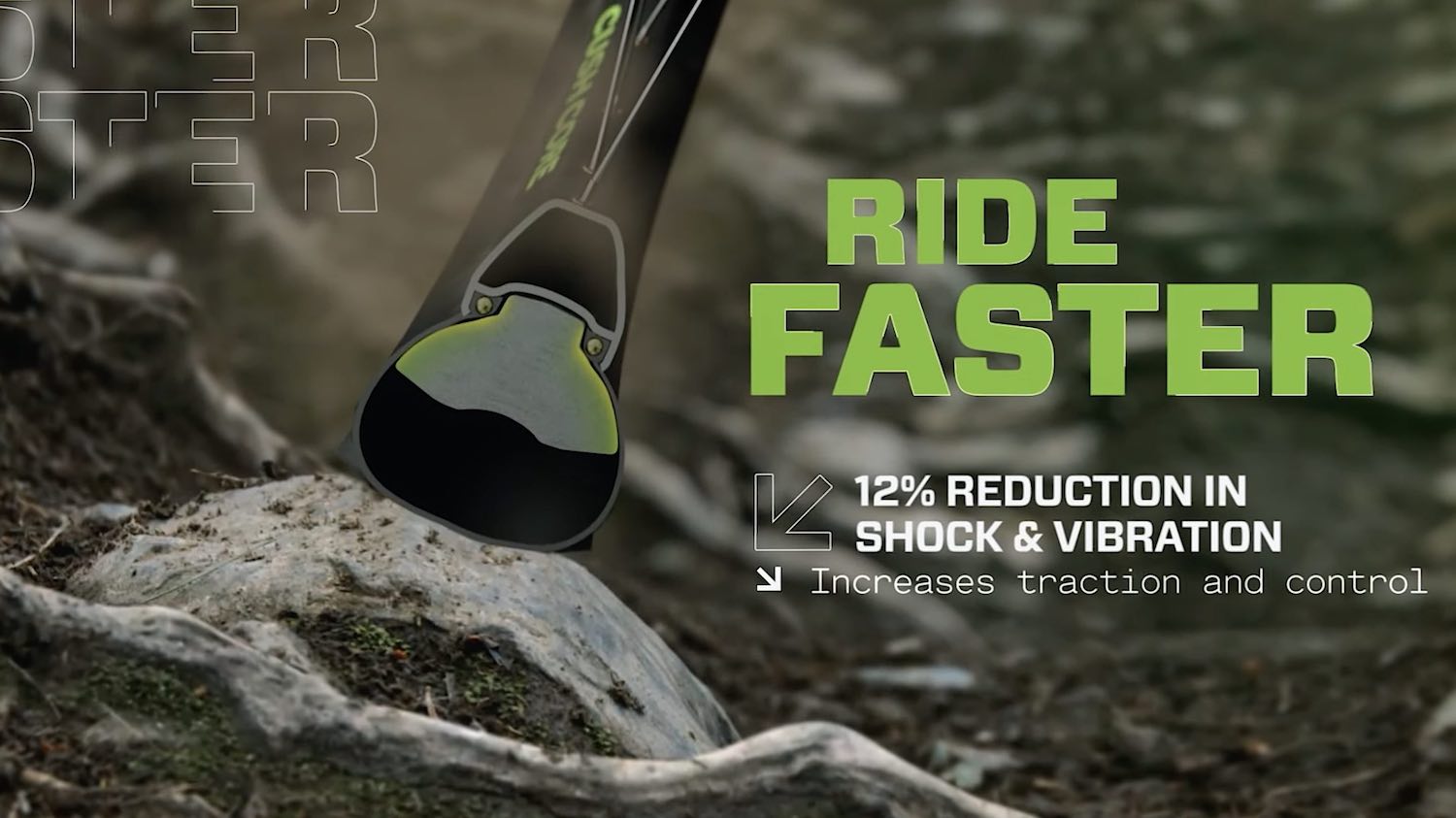Table of Contents
Tires are often the most important form of suspension on a gravel bike. But to extract the most comfort from a tire, you really have to use them with rather low air pressure.
This can come at the cost of affecting your cornering ability, as your tire sidewalls will attempt to fold under high forces. And worse, lower pressures can also result in damaged rims.
Cushcore tire inserts promise to solve those problems and make your bike safer, more comfortable, and faster (at least in theory).
So, does Cushcore deliver?
What Are Cushcore Tire Inserts?
Cushcore inserts were first made for downhill mountain bikes where every bit of suspension and traction is crucial for a fast descent. Cushcore later found its way to trail bikes, and now they’re trying to conquer the gravel segment.
The idea behind Cushcore tire inserts is very simple. You put a special foam insert inside your tire, which protects your rim from hard hits that are common with low tire pressures.
You get more overall comfort too – Cushcore helps to make your tire less bouncy by stabilizing your sidewalls.
And lastly, Cushcore improves tire behavior in tight corners by limiting unwanted tire movement so that you can push forward with more confidence and speed.
The Installation… Is Not Effortless
Cushcore works only in a tubeless setup so you must have tubeless-ready rims and tubeless-ready tires to fit the system. You also need the Cushcore valves because your standard tubeless valves will not work.
I thought I would have no problems installing the Cushcore inserts because setting up tubeless tires is something I’ve been doing for many, many years…
But how wrong I was! My setup was 650B x 50mm Panaracer GravelKing SK tires and Cushcore XC inserts. These tires are already a tight fit on my DT Swiss M1900 spline wheels – adding the Cushcore foam did not make things easier!
The whole process starts with putting the inserts onto the rim. This is a rather easy task because the inserts have ridges that nicely fit the inner dimension of the rim.
Then things become much more challenging. Squeezing the tire beads requires a lot more force than usual, and a lot of water with soap to help the tire find its place. But the most challenging part is when you have to use two tire levers and push really hard to finish the job.
With time and gained experience the whole process becomes easier, but it will always take more time than a standard tubeless setup installation.
My Benchmark Bike Setup
I equipped my Jamis Renegade benchmark bike with a rigid carbon fork, rigid FSA stem, Ergon Allroad Pro carbon seatpost, DT Swiss M1900 650B wheels, and Panaracer GravelKing SK 50mm tires.
I then tested various tire pressures on the front and rear of my bike – that was both with and without the Cushcore tire inserts.
Vibration Test Results
You can see my vibration measurement procedure & outdoor test courses HERE.
Amazingly, there was a significant comfort improvement across the board with Cushcore installed – that was both subjectively and in my measurements.
With the same tire pressure, the comfort improvement was 14% on the fast gravel road – which is a feat that few component changes can achieve. There was a modest 3,9% rear improvement but it was still quite noticeable.
The comfort difference was a bit smaller on the bumpy forest trail. I saw an 8% improvement up front when using the same tire pressure, and it jumped up to a 12,3% improvement when I dropped the tire pressure down to 15 psi.
Cushcore Comfort Analysis
Cushcore really does provide a more comfortable ride, and shockingly, it does so without any noticeable drawbacks.
I thought that tires with Cushcore inserts would behave strangely (especially in corners) but the opposite was true. My tires cornered better and rolled nicer on the rough roads.
I was even able to lower the air pressure to 15 psi on my 650B x 50mm tires. Normally 15 psi is simply unusable at this width but to my surprise, it worked quite well on the front – it was predictable and without any noticeable roll in tight corners.
The rear tire sometimes exhibited signs of too little air pressure at 15 psi, especially when cornering fast. But it was a mild sensation (and you don’t need that low pressure at the back anyway).
Interestingly, my measurements at the front of the Cushcore bike with 15 psi showed no real comfort improvement on the fast gravel road (compared to 20 psi). But on the bumpy forest trail, there was a significant improvement of 5,3% fewer vibrations.
After all of my testing, I believe that 15 psi at the front and 18 psi at the back is a sweet spot for my 650B x 50mm tire with Cushcore. At least for my body weight and the Panaracer GravelKing SK tire.
But I can’t help but wonder if I can achieve even better comfort when using a more supple 650B tire like the Soma Cazadero. Perhaps, I’ll have to find out…
Is Cushcore A Must-Have for Gravel Riding?
If you’ve already experimented with low tire pressures and love the added comfort, then these tire inserts are a great upgrade for you. It makes riding with low air pressure more comfortable, more predictable, and more enjoyable.
But if you like to run a higher tire pressure most of the time, then the benefits of the Cushcore inserts will be hard to perceive, and the added weight, cost, and effort will simply not be worth it. The 650B Cushcore inserts add approximately 140 grams to each wheel.
At a cost of €150, Cushcore seems a bit expensive for what is essentially a bit of foam. But it’s a surprisingly affordable way to garner additional comfort. This is especially the case when you compare it to the price of a Lauf Grit SL suspension fork (€990) or Ergon Allroad Pro seatpost (€250).
And it’s even more of a bargain when you realise that, unlike a fork or seatpost, Cushcore adds comfort to both the front and the rear of your bike.
You can support the CyclingAbout Comfort Lab by purchasing Cushcore Tire Inserts on Amazon. Simply click HERE to make your purchase, and a small commission will come our way.











